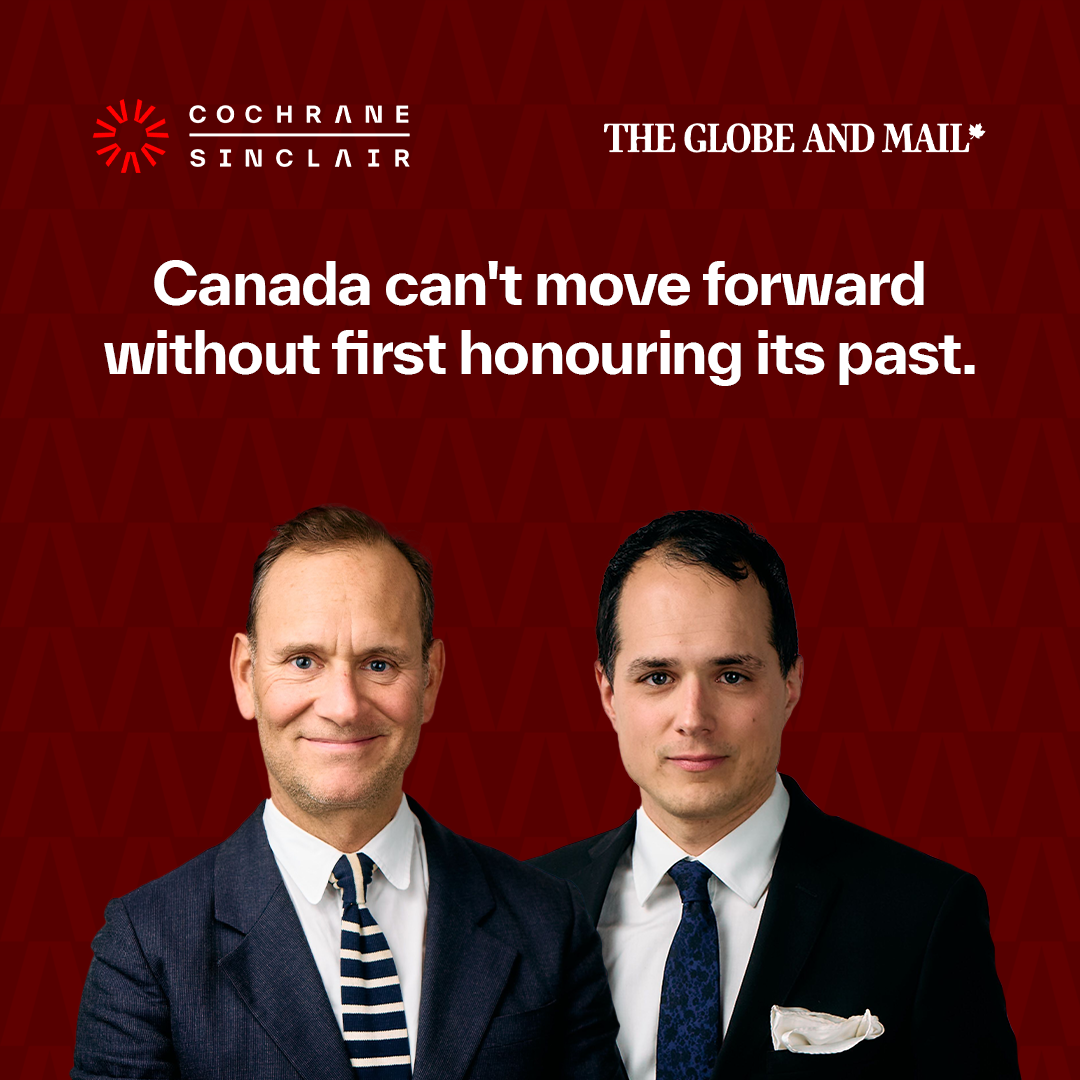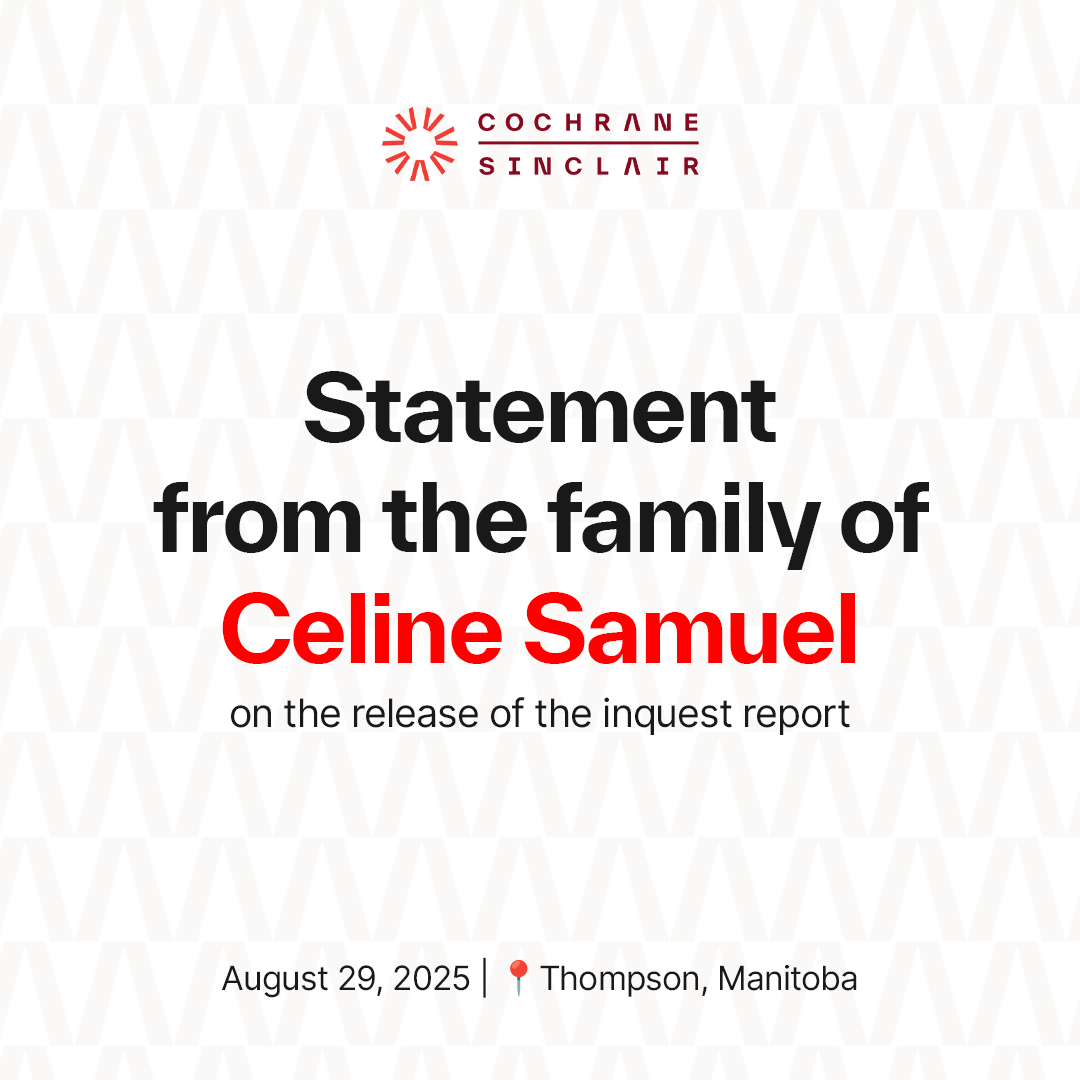On July 17, 2025, The Globe and Mail published an article by Max Faille (Managing partner - Vancouver office) and Aaron Christoff (Partner) in connection with the Prime Minister’s C-5 Indigenous Leadership Summit.
In the piece, Faille and Christoff argue that Canada’s new wave of “nation-building” cannot succeed unless the Crown first fulfills the promises it made to Indigenous Nations over 150 years ago, including treaty compensation, land rights, and meaningful consent.
They draw historical parallels between Bill C-5 and the Canadian Pacific Railway, both built on Indigenous lands, both requiring Indigenous agreement, and outline how Canada’s obligations remain largely unfulfilled.
“There is not a single Indigenous Nation toward which Canada did not then breach its treaty commitments. Not one.”
The article also previews themes from their forthcoming book, Full Circle: The Essential Guide to Canada’s Relationship with Indigenous Peoples, to be released in September 2026.
Read the article in The Globe and Mail found here
______________
To secure their support, the Prime Minister needs to address unfinished business with Indigenous Nations
By Aaron Christoff and Max Faille
Prime Minister Mark Carney is gearing up for a contentious meeting with over 600 First Nation leaders, in a bid to win their support for his nation-building ambitions embodied in Bill C-5 – the so-called Building Canada Act.
The Prime Minister would do well to recall what happened the first time one of his predecessors went down a similar path: Sir John A. Macdonald’s grand project to unite the then-new nation of Canada “by a ribbon of steel” – the Canadian Pacific Railway.
Building the CPR required more than steel, spikes and rail ties. It required Indigenous consent.
Under the common law and the dictates of the Royal Proclamation of 1763, the Crown was, and still is, bound to secure access to Indigenous lands only with their agreement, obtained at an open, public meeting of each Nation. That express obligation was reiterated in 1870 when the young country of Canada sought to stretch its original, compact borders to include the vast territories that had, since 1670, been under Royal Charter to the Hudson’s Bay Company: what is now northern Quebec and Ontario, the Prairie provinces, and large parts of the North – representing about half of Canada’s current total land mass.
Adding those lands to Canada required approval by the British Crown. That approval was given, but made explicitly contingent on Canada’s promise, formally given in the House of Commons in an address by the Prime Minister, to abide by the “equitable principles which have uniformly governed the British Crown in its dealings with the aborigines,” and to settle “the claims of Indian tribes to compensation” for the lands in question.
That consent was in turn imperfectly and incompletely secured, in the form of the historic treaties that stretch from Ontario to the Rockies: wherever the railway would go, Canada first needed to negotiate treaty and, for the most part, it did so.
Each treaty was conditioned on promises made by Canada to the First Nation treaty signatories.
But if the Prime Minister is expected to endure a rocky ride tomorrow, it is because those original promises to this day remain massively unfulfilled.
There is not a single Indigenous Nation toward which Canada did not then breach its treaty commitments. Not one. For the vast majority, outstanding treaty or other related obligations remain unfulfilled to this day –some 150 years after those solemn promises were made.
The treaties allowed Canada to become Canada; they are the basic real estate law of the land. The bargain has proven a providential one for Canada; less so for its original inhabitants.
In exchange for shared access to vast territories and their bountiful resources, the Crown agreed to provide modest compensation to the original landlords. Because the Crown couldn’t afford an upfront payment for the value it was acquiring, it opted instead to provide initial lump-sum payments and assistance (especially farming assistance), followed by smaller, but indefinite, annual payments.
But the promised farming assistance was incompetently administered and to a large extent never delivered, and the annual payments were never adjusted for inflation, and remain stuck at an unconscionable $5 a year per person.
Reserve lands that were promised to be set aside –carved out of the Nations’ astronomically larger territories – were never fully provided and/or were later cut down and clawed back. The promised schooling that Indigenous Nations rightly insisted on for their children (“education is the new bison” it was and is still said) was instead twisted into an unfathomable, dystopic system of underfunded, overcrowded institutions replete with abuse, illness, and death: residential schools.
While some of these countless broken promises have been addressed, most have not. In the last 50 years, around 300 resulting Indigenous claims have been settled; more than 800 remain unresolved today. And still, Indigenous Nations, honourably, never reneged on their end of the bargain: the sharing of access to their vast and bountiful territories that make up Canada.
In significant parts of the country, Canada has left many Nations outside treaty altogether – including the Dakota and the Lakota on the Prairies, and most Nations in British Columbia. As our Supreme Court has repeatedly stated, where Canada has yet to negotiate agreement with underlying Aboriginal title and rights-holders, it hasn’t fulfilled its constitutional obligations, and needs to get on with it. This would be a good time to start.
If Canada wants to secure the trust and support of Indigenous Nations for a new round of nation-building ambitions, it would do well to start by aggressively addressing the unfinished business of fulfilling its original promises to them, outstanding some 150 years later.
Aaron Christoff is a Cree Citizen of Saulteau First Nations in Treaty 8 Territory, and, with Max Faille, a partner at Cochrane Sinclair LLP, Vancouver. They are the authors of the forthcoming book, Full Circle: The Essential Guide to Canada’s Relationship with Indigenous Peoples (McClelland& Stewart), to be released in September 2026.


